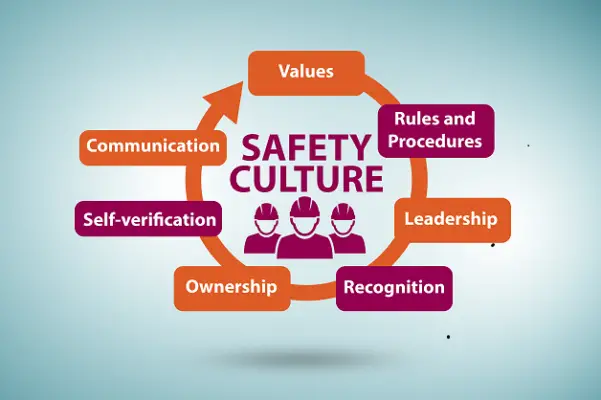The beginning of this article provides an overview of the Arc Flash Risk Assessment Template. It explains the purpose and importance of conducting a risk assessment to mitigate potential arc flash hazards.
The article further discusses the various components and steps involved in the risk assessment process. It emphasizes proper training and adherence to safety guidelines to prevent accidents and injuries.
Additionally, it highlights the significance of regularly reviewing and updating the risk assessment to ensure ongoing safety compliance.
The article shares real-life incidents to illustrate the potential dangers and consequences of arc flash incidents.

Key Takeaway:
- Arc Flash Risk Assessment maximizes safety: Organizations can take necessary precautions to protect their workers and prevent accidents and injuries by understanding and identifying arc flash hazards.
- Importance of complying with regulations: Conducting an arc flash risk assessment is good practice and a compliance requirement in many jurisdictions. Complying with these regulations helps avoid penalties and legal issues.
- Ongoing maintenance and updates for safety: An arc flash risk assessment should not be a one-time activity.
- Regularly maintaining and updating the assessment ensures that any changes in the electrical systems are accounted for and safety measures are up to date.
Understanding Arc Flash Hazards:
An in-depth comprehension of the risks associated with arc flash incidents is crucial to mitigate potential hazards effectively.
Understanding the complexities and specific dangers involved in arc flash events, individuals can take proactive measures to prevent accidents and injuries.
This includes implementing proper risk assessment procedures, adhering to safety protocols, and ensuring the use of appropriate protective equipment.
A comprehensive understanding of arc flash hazards is essential for maintaining a safe and secure work environment.
Furthermore, it is important to know that arc flash incidents can result in severe burns, electrical shock, and even fatalities. By comprehending these potential consequences, individuals can better appreciate the importance of prioritizing safety measures and implementing effective hazard prevention strategies.
Ignoring or underestimating the risks associated with arc flash can devastate individuals and organizations.
It is crucial to consistently stay up-to-date with the latest advancements and best practices in arc flash hazard prevention.
This includes regularly reviewing and updating risk assessment procedures, conducting ongoing employee training sessions, and staying informed about any regulatory changes or industry developments.
Individuals can greatly reduce the likelihood of arc flash incidents and their associated risks by continuously striving to improve and enhance safety measures.
To ensure the utmost safety and protection, it is essential to prioritize the implementation of comprehensive arc flash risk assessment procedures.
Individuals and organisations can effectively identify and address potential hazards by utilizing professional guidance, reliable tools, and established templates. Do not miss the opportunity to enhance safety protocols and prevent the devastating consequences of arc flash incidents.
Importance of Arc Flash Risk Assessment:
Arc Flash Risk Assessment plays a crucial role in ensuring safety and preventing electrical hazards in the workplace.
Evaluating the potential for arc flashes this assessment helps organizations identify and mitigate risks, protecting employees and equipment.
It involves analyzing electrical systems, identifying hazards, and implementing preventive measures such as proper training, maintenance, and personal protective equipment.
Implementing an arc flash risk assessment ensures compliance with safety regulations and reduces the likelihood of accidents and associated costs.
Compliance Requirements:
The compliance requirements for conducting an arc flash risk assessment are essential to ensure safety and adherence to regulations. Compliance with these requirements helps organizations minimize the risk of arc flash incidents and protect employees and equipment.
Following the established guidelines and standards, such as NFPA 70E, organizations can effectively manage and mitigate the potential hazards associated with arc flash events. Compliance requirements include:
| Compliance Requirement | Compliance Action |
|---|---|
| Provide proper training and PPE. | Engage qualified personnel to assess the system and identify potential arc flash hazards. |
| Implement preventive measures | Install arc flash mitigation devices, establish safe work practices, and implement engineering controls. |
| Regularly review and update the risk assessment. | Ensure employees receive training on arc flash hazards, safe work procedures, and provide them with appropriate personal protective equipment. |
| Regularly review and update the risk assessment | Periodically reassess the system to account for changes, ensure ongoing compliance, and address new risks. |
It is important to note that compliance requirements may vary based on the specific regulations and standards applicable to each industry and jurisdiction.
Organizations should consult the relevant authorities, such as occupational safety and health administrations, to ensure compliance with all applicable requirements.
To ensure the safety of both employees and equipment, organizations must prioritize compliance with the necessary arc flash risk assessment requirements.
The consequences of non-compliance can be severe, including serious injuries, fatalities, equipment damage, and legal liabilities.
Following the recommended guidelines and taking proactive measures, organizations can create a safer work environment that minimizes the risk of arc flash incidents.
Take action now to avoid the potential harm and consequences associated with non-compliance.

Conducting an Arc Flash Risk Assessment:
Conducting an Arc Flash Risk Assessment:
Arc flash risk assessments are essential in ensuring workplace safety. By systematically evaluating potential hazards and implementing preventive measures, employers can protect workers from dangerous electrical incidents. To conduct an arc flash risk assessment, follow these four steps:
- Identify potential sources of arc flash incidents, such as electrical equipment and systems. Assess the likelihood of arc flash occurrences based on factors like equipment condition, maintenance history, and the presence of flammable materials.
- Measure the potential severity of an arc flash incident by considering factors such as fault current levels, available fault clearing time, and equipment protection measures. Use specialized tools and techniques to gather accurate data for analysis.
- Develop and implement preventive measures to reduce the risk of arc flash incidents. This may involve implementing engineering controls, providing personal protective equipment (PPE), and establishing safe work practices and procedures.
- Regularly review and update the arc flash risk assessment to account for any equipment, systems, or work process changes. Ensure that employees receive appropriate training on arc flash hazards and prevention methods.
It is important to note that arc flash risk assessments should be conducted by qualified professionals with expertise in electrical safety. Attempting to perform this assessment without appropriate knowledge and training can significantly compromise the accuracy and effectiveness of the assessment.
A fact: The Occupational Safety and Health Administration (OSHA) provides guidelines on arc flash safety in their standard 29 CFR 1910.332.
Maintaining and Updating the Assessment:
The process of continuously managing and revising the Arc Flash Risk Assessment involves several crucial steps:
- Regular Data Collection: Collect all relevant information, including electrical system changes, equipment modifications, and safety procedure updates. Ensure that the assessment reflects the current state of the electrical system.
- Ongoing Hazard Identification and Evaluation: Periodically review the assessment to identify any new potential arc flash hazards or changes in the existing ones. Evaluate these hazards using standardized methods and criteria.
- Updating the Assessment Documentation: Document all modifications and updates made to the assessment, including the revision date, the reason for the change, and the person responsible for the revision. Make the updated assessment readily accessible to authorized personnel.
- Training and Communication: Conduct training sessions to educate employees and contractors about the revised assessment and any specific changes. Ensure effective communication channels to inform all relevant stakeholders of the revised assessment status.
It is important to remember that the maintenance and update of the Arc Flash Risk Assessment is an ongoing process that requires regular attention and compliance.
According to the source, a proper maintenance program can significantly reduce the risk of electrical accidents and safeguard people and equipment.
Additional Compliance Steps:
Additional measures to ensure compliance with regulations are essential for maintaining a safe work environment. Here is a concise and informative guide on the recommended actions to take:
- Conduct an Arc Flash Risk Assessment: Identify potential areas of concern, evaluate hazards, and determine the necessary safety measures.
- Implement Safety Procedures: Establish protocols for equipment maintenance, lockout/tagout procedures, and proper use of personal protective equipment (PPE).
- Provide Employee Training: Educate workers on arc flash hazards, safety protocols, and emergency response procedures.
- Regularly Inspect and Maintain Equipment: Conduct routine inspections and maintenance to prevent equipment failure and minimize the risk of arc flashes.
- Review and Update Safety Policies: Stay current with industry standards, regulations, and best practices to ensure ongoing compliance.
These additional compliance steps will help protect employees and mitigate the risk of arc flash incidents.
PRO TIP: Establish a safety culture by promoting open communication, regular safety meetings, and continuous monitoring of compliance measures.

Conclusion:
The assessment findings suggest that proper Arc Flash Risk Assessment is crucial for ensuring employee safety and compliance with regulations. Conducting a thorough assessment, implementing necessary control measures, and regularly reviewing and updating the assessment are key factors in mitigating potential risks.
Additionally, providing employees with adequate training and personal protective equipment can further enhance safety measures.
Pro Tip: Regularly monitor and update the Arc Flash Risk Assessment to ensure the continued effectiveness of implemented control measures.
Five Facts About Arc Flash Risk Assessment Template:
- ✅ An arc flash risk assessment is necessary to ensure worker safety and compliance with OSHA and NFPA standards. (Source: Team Research)
- ✅ Arc flash events release energy through heat, intense light, pressure, and sound waves, which can cause severe injuries or death. (Source: Team Research)
- ✅ NFPA 70E is the standard that guides facilities to electrical safety and compliance. (Source: Team Research)
- ✅ An arc flash risk assessment report identifies hazards and provides information on adjustments, labelling, and personal protective equipment (PPE) needed to mitigate them. (Source: Team Research)
- ✅ Arc flash risk assessments should be reviewed and updated at intervals not to exceed five years or when significant changes are made to the system. (Source: Team Research)
FAQs about Arc Flash Risk Assessment Template
What is an arc flash risk assessment?
An arc flash risk assessment is a thorough evaluation of potential arc flash hazards in a workplace’s electrical system. It helps identify and minimize risks to worker safety and ensures compliance with OSHA and NFPA requirements.
What are the dangers of an arc flash incident?
An arc flash incident can result in severe injuries such as burns, collapsed lungs, loss of vision, ruptured eardrums, and even death. The release of energy during an arc flash can cause heat, intense light, blast pressure waves, toxic fumes, and flying debris.
Why is arc flash compliance important?
Arc flash compliance is essential for protecting employees who work on or around energized equipment.
It involves identifying hazards, providing proper training, implementing safety measures, and ensuring personal protective equipment (PPE) use. Compliance prevents injuries, saves lives, and avoids costly fines.
How often should arc flash risk assessments be reviewed?
Regular reviews ensure the assessment remains accurate and up-to-date with any modifications or additions to the facility.
What training is required for employees exposed to arc flash hazards?
Employees exposed to arc flash hazards must receive training in accordance with NFPA 70E standards. Full-day training is recommended for those not previously trained, and refresher courses should be conducted annually. Certificates should be issued upon completion of each training session.
Why should companies invest in arc flash risk assessment services?
Companies should invest in professional arc flash risk assessment services to ensure the safety of their workers and adhere to regulatory requirements. These services provide comprehensive assessments, accurate information, and expert guidance for implementing safety measures to mitigate arc flash hazards.

Chris Ekai is a Risk Management expert with over 10 years of experience in the field. He has a Master’s(MSc) degree in Risk Management from University of Portsmouth and is a CPA and Finance professional. He currently works as a Content Manager at Risk Publishing, writing about Enterprise Risk Management, Business Continuity Management and Project Management.

